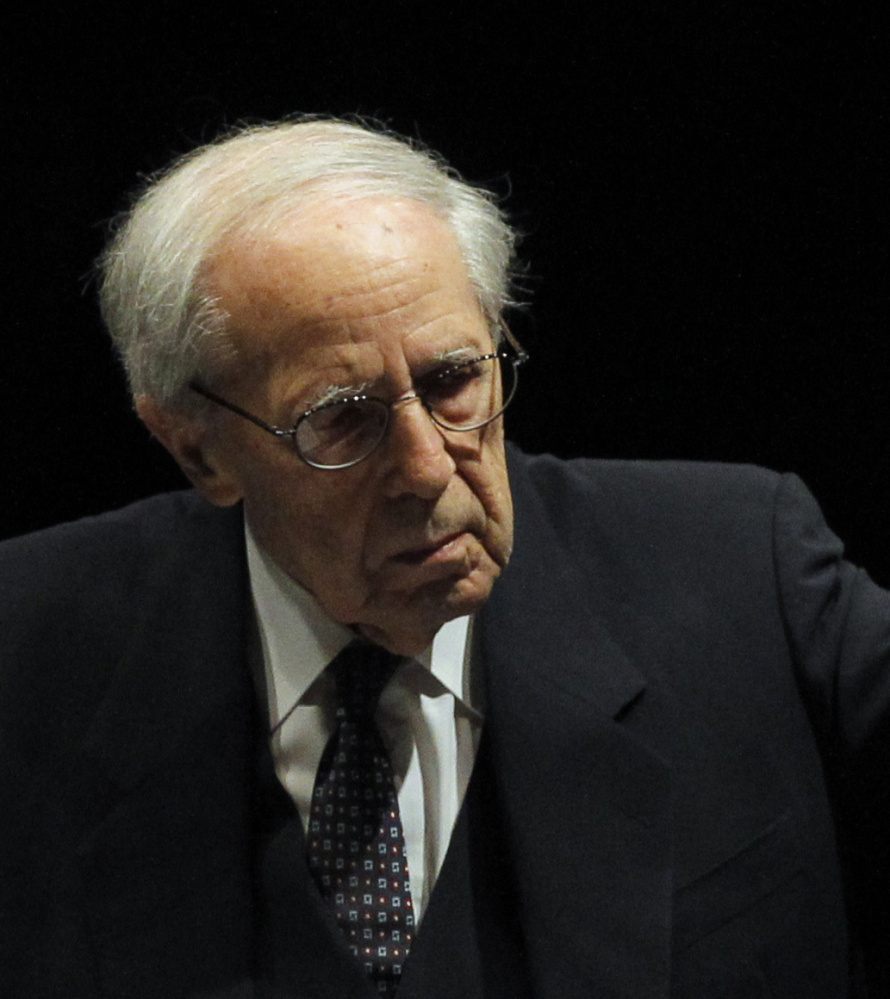Pierre Boulez, who began his career as a radical modernist composer dedicated to overthrowing classical traditions and lived to become one of the most revered and sought-after orchestral conductors in the world, died Jan. 6 in Baden-Baden, Germany. He was 90.
Boulez came to public attention as the leading voice of postwar avant-garde music in France, an enfant terrible given to suggesting that “the most elegant way of solving the opera problem would be to blow up the opera houses.”
Not only did he outlive that youthful fervor, he went on to conduct Richard Wagner’s “Ring” Cycle at Bayreuth in Germany, that most exalted – and most conservative – of operatic shrines, and enjoyed long and fruitful artistic relationships with many of the world’s great orchestras.
Throughout his life, however, he remained devoted to new and unusual music. During his bracing tenure as music director of the New York Philharmonic from 1971 to 1978, he led the orchestra through more contemporary works than it had played since the 19th century.
He spoke of conducting in visual terms. “I conceive of a composition as a kind of canvas, created to be respected, certainly, but also to be transformed,” he told Helena Matheopoulos for her 1982 book “Maestro: Encounters with Conductors of Today.”
His emphasis on clarity, economy and objectivity was prized by the composers whose works he led. “What a refreshing change it is to hear a piece done so that you can grasp how it is written,” the British composer Peter Maxwell Davies told Matheopoulos.
Another French composer of an earlier and more conservative generation, Darius Milhaud, paid Boulez what must be the ultimate compliment. “He despises my music,” Milhaud once said, “but he conducts it better than anyone.”
Boulez was also renowned for his catalogue of compositions, some of which – the Sonatine for flute and piano (1946); the Piano Sonata No. 2 (1948); “Le Marteau sans Maitre” (1955) for alto and chamber ensemble, and “Pli Selon Pli” (1962) for soprano and large orchestra – counted among the most significant and influential works of their time.
Boulez created a violent, glittering and emotional music that was, nevertheless, always carefully controlled, anchored by a highly complicated master plan.
In later years, Boulez was by all accounts a gracious, soft-spoken and self-effacing gentleman, much beloved by the musicians he worked with. In his composition and his conducting, he was the antithesis of the romanticized stereotype of egoistic, heaven-storming musician.
“Perhaps I can explain it best by an old Chinese story,” he said to his biographer, the late Joan Peyser. “A painter drew a landscape so beautifully that he entered the picture and disappeared. For me, that is the definition of a great work – a landscape painted so well that the artist disappears in it.”
Pierre Boulez was born in Montbrison, France, on March 26, 1925. He originally planned to devote his career to engineering and mathematics.
Instead, he entered the Paris Conservatory in 1942.
Boulez kept his private life resolutely private, with no acknowledged romantic relationship of any sort. Survivors could not immediately be confirmed.
Copy the Story LinkSend questions/comments to the editors.



Success. Please wait for the page to reload. If the page does not reload within 5 seconds, please refresh the page.
Enter your email and password to access comments.
Hi, to comment on stories you must . This profile is in addition to your subscription and website login.
Already have a commenting profile? .
Invalid username/password.
Please check your email to confirm and complete your registration.
Only subscribers are eligible to post comments. Please subscribe or login first for digital access. Here’s why.
Use the form below to reset your password. When you've submitted your account email, we will send an email with a reset code.